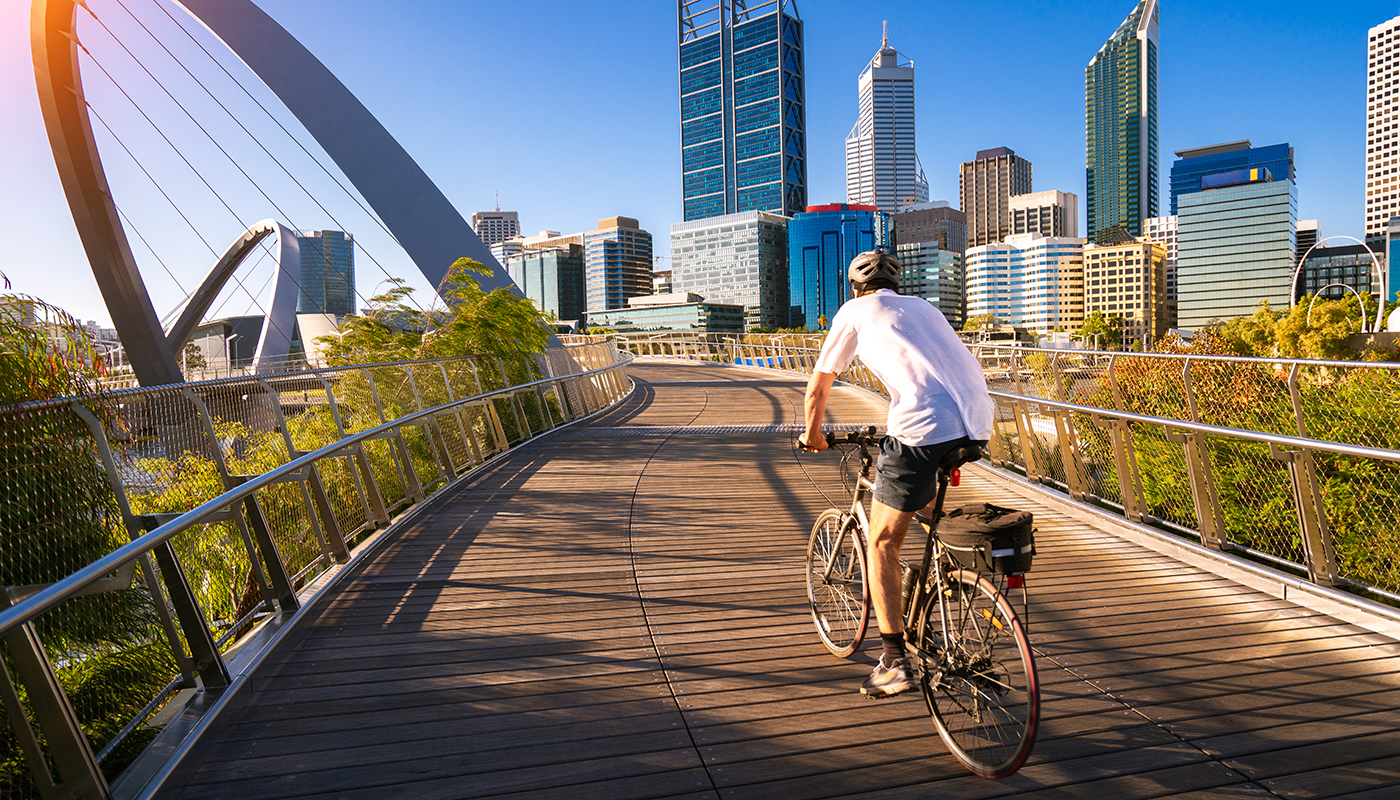How To Reduce Your Carbon Footprint at Home and While Traveling
It’s not that hard to do, and you can use many of the same practices both at home and on the go.
 iStock
iStock
You don’t have to be a superhero to save the planet. The average person could do just a few things every day to make a huge difference for our planet.
For starters, if we walked more and ate more vegetables and less meat, we could significantly reduce greenhouse gas emissions. And when it comes to traveling, we’d burn less fuel if we booked direct flights, packed fewer bags and made eco-friendly lodging choices.
In the United States, the average person’s carbon footprint is 16 tons, which is one of the largest carbon footprints in the world, according to The Nature Conservancy. Globally, the average is about 4 tons. So, we can eliminate some of the things we’re doing that contribute to climate change with simple changes in our behavior. And that’s a superpower any of us can master.
 iStock
iStock
The importance of reducing our carbon footprint
The car you drive. The way you heat your house. The food you eat. And even what you do with the food you don’t eat. All of these factors contribute to your carbon footprint, or the total amount of greenhouse gases (including carbon dioxide and methane) emitted.
Our habits can cause an increase in greenhouse gas emissions, which trap heat in the atmosphere and lead to global warming and climate change. Reducing our carbon footprint is essential because air quality improvements benefit human health, the global economy and biodiversity.
Curious about your own carbon footprint? Use the EPA’s Household Carbon Footprint Calculator to see how your energy usage, transportation and waste practices rank.
The United Nations’ 17 Sustainable Development Goals illustrate how governments, corporations and citizens can better protect the environment and slow climate change. While some of the goals—like ending poverty—seem daunting to the average individual, there are many achievable goals any of us can adopt. Read more for practices to start incorporating now.
Ways to reduce your carbon footprint at home
From planning your errands in order to maximize your fuel efficiency and minimize your time on the road to composting your family’s food waste, there are numerous easy alterations to your daily habits that could make your life easier and the planet healthier.
Here are a few tips to consider:
 iStock
iStock
1. Make sustainable transportation choices.
Fuel-efficient vehicles include hybrid electric vehicles, plug-in hybrid electric vehicles and all-electric vehicles. These vehicles produce fewer greenhouse gas emissions and are increasingly more popular consumer options. Read more about hybrid and electric vehicles.
- If you’re not ready for a hybrid or electric vehicle, there are some driving practices that could help improve your gas mileage and reduce fuel use.
- Public transport, walking and biking are also fuel-saving alternatives. Nearly 60% of public transit buses run on fuel types that producer fewer emissions, according to the U.S. Department of Energy.
- All age groups can use e-bikes, which are bicycles with battery-powered assistance. AAA also offers roadside assistance for cyclists. Even if you don’t completely give up your vehicle, making some of your in-town trips with an e-bike can reduce your overall fossil fuel consumption.
 iStock
iStock
2. Conserve energy whenever possible.
Incremental changes can lead to significant results, and there are some measures you can take now that cost very little.
- Reduce how much you heat and cool your home (especially for those of us who usually experience milder temperatures in the spring and fall months). Read more about how to use your thermostat more efficiently here.
- Switch to LED light bulbs, wash your laundry in cold water and hang items to dry instead of using the dryer.If your home energy is powered by oil, coal or gas, switching to renewable energy sources such as wind or solar (above) can reduce your carbon footprint by up to 1.5 tons of carbon dioxide equivalent (CO2e) annually.
- Even if you don’t commit to wind or solar options, you can make your home significantly more energy-efficient with better insulation or by replacing an oil or gas furnace with an electric heat pump, reducing your carbon footprint by up to 900 kilograms of CO2e annually.
Take a digital day of rest and unplug unused devices.
More Energy-Saving Tips MARC WAGNER
MARC WAGNER
3. Reduce waste and recycle.
Those large reusable water bottles aren’t just trendy—they also help you save money and reduce waste. And if you’re prone to forgetting your reusable bags when shopping, try writing “BAGS” at the top of your list to help you remember them. Some stores may even offer a refund of 5 cents per bag for bringing your own bags. Keep more items from going to the landfill with these and more recycling and waste reduction tips from The Nature Conservancy.
Additionally, paper and plastic aren’t the only items you can recycle. AAA helps you recycle your vehicle battery (above), too. And it’s super easy to do.
 iStock
iStock
4. Buy from and support local businesses.
Shopping locally not only keeps dollars in your community, but it also reduces environmental impacts. Citizens log 26% fewer automobile miles when they live in neighborhoods with more local businesses. And when you buy food that is locally grown or sourced, you are more knowledgeable about how it was produced. Local farmers can also only grow their products according to the seasons in your area, which guarantees that produce is fresh and rich in nutrients. Organic farming practices also support soil health, which can help crops endure extreme weather events.
Ways of reducing your carbon footprint while traveling
While you may feel you have less control over your routines when traveling, you might find it’s easier than you think to maintain your sustainability habits. Here are three ways to take better care of the Earth while you’re out there exploring it.
 iStock
iStock
1. Use eco-friendly transportation.
When traveling by air, reduce your emissions by booking nonstop flights, which offer direct routes to destinations. At your destination, consider walking, biking, ride-sharing or public transport while exploring. If you’re renting a car, choose electric, hybrid or smaller cars.
2. Choose sustainable accommodations.
When researching lodging options, look for hotels that engage in sustainable practices, which can range from eliminating plastic to using solar power. If you can’t find a property’s sustainability practices online, contact the hotel directly to ask if they recycle or compost and how they dispose of their graywater.
Regardless of whether you book at a LEED-certified (Leadership in Energy and Environmental Design-certified) hotel, there are a few specific measures you can implement during your stay. These include putting up the “Do not disturb” sign to avoid daily laundering and vacuuming, minimizing your own waste, and ensuring that you place items to be recycled appropriately.
 iStock
iStock
3. Keep ecotourism and responsible travel top of mind.
Ecotourism unites conservation, communities and sustainable travel and expands beyond exploring nature and wildlife. It includes building environmental and cultural awareness and respect and should provide positive experiences for both visitors and hosts. One way to be a sustainable traveler is to travel with a sense of purpose and create a positive impact. For example, traveling in the off-season can support local economies beyond peak times. And remember to shop locally while traveling, too. AAA Members receive special benefits with partner The Travel Corporation, a group of travel brands including familiar names like Trafalgar, African Travel and Uniworld Boutique River Cruises, that offers experiences that focus on positive social impact, sustainability and giving back.
 iStock
iStock
Environmentally friendly and eco-conscious travel with AAA
AAA is also a member of Tourism Cares and partners with travel providers that are taking actionable steps to help people, wildlife and the planet.
Whether you’re at home or traveling, reducing your carbon footprint comes down to making responsible choices that lead to less waste and reducing activities that lead to greater greenhouse gas and carbon emissions. But it’s achievable with simple actions like driving less, shopping locally, and reusing items or recycling them when reuse is not possible.